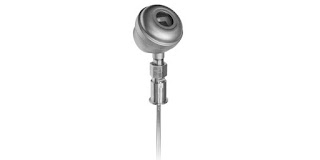The Magnetrol Eclipse® Model 700 GWR is designed with the chemical processing industry in mind. It gives you the performance and durability you need to address your biggest challenges in a streamlined, versatile configuration cost-effective enough to use in a variety of common applications.
The Eclipse® 700 is a guided wave radar (GWR) transmitter that easily handles challenging situations as well as common chemical processing applications. Its streamlined configuration gives you the features you want and the diagnostics you need, at the price point you expect.
Versatile – Able to be used in a broad range of chemical processing applications
Robust – Stands up to challenging conditions like foaming, interface, and high pressure or harsh conditions
Superior SNR – Strong signal strength is ideal for low dielectric media
Reliable – True Level Measure provides industry-leading accuracy along the entire probe length
Overfill-Safe Operation – Only Eclipse transmitters are available with overfill-capable probes
Proactive Diagnostics – Saves echo curves and offers troubleshooting tips when a problem occurs
For more information, contact Miller Energy, Inc. Call them at 800-631-5454 or visit their website at https://millerenergy.com.

